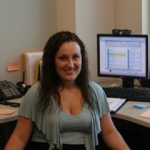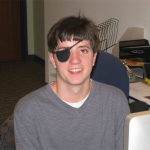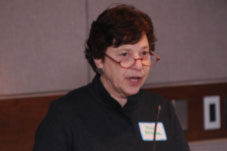This week four Northeastern co-ops have started working at Snell Library to assist in various departments through the summer and fall semesters. Here is a little bit about each of them:
 Kelsey Strout, Marketing & Events Co-op
Kelsey Strout, Marketing & Events Co-op
“My name is Kelsey Strout and I am a middler in the Art and Design program at Northeastern. I traded a small town in New Jersey for the big and beautiful city of Boston. I have had a passion for art my entire life and feel most comfortable when partaking in creative activities. I am working toward a BA in Art and Design and a minor in Business Administration with the hopes of becoming an event designer after graduating. In my spare time, I enjoy drawing, babysitting, going to the beach and baking.”
 Will Macowski, Graphic Design Co-op
Will Macowski, Graphic Design Co-op
“I’m a fourth year Graphic Design major going for a minor in Sociology. Outside of my studies, I enjoy the fine arts and love to draw and sculpt. I’ve recently ventured into the realm of tattooing and frequently transform my living room into a makeshift tattoo parlor.”
 William Bratches, University Archives Co-op
William Bratches, University Archives Co-op
“My name is William Bratches, and I am a middler majoring in history with two minors in business and political science. Although Boston is now home, I am originally from a small town on the Connecticut shoreline. Besides history, I enjoy music, running, reading, cooking, biking, and recently picked up tailoring!”
 Mike Helly, DMDS Co-op
Mike Helly, DMDS Co-op
Co-op student Mike Helly is a graphic design major at Northeastern University. Web design and book layout are the areas of design that he finds most interesting. In his free time Mike enjoys to skateboard, play basketball, and listen to hip hop.
Welcome new co-ops and best of luck within each of your positions! We are so happy to have you 🙂
 Joan Krizack, University Archivist and Head of Special Collections, will depart Northeastern University after 17 years since her arrival as the founding archivist. Joan resigned her position on July 7th to pursue a career as a freelance consultant. Joan leaves a legacy at the University of several hundred historical collections that document the struggles and triumphs of Boston’s African American, Chinese, Latino and GLBTQ communities. She has also received numerous awards; most recently the Champions of Freedom Award for her work managing Northeastern University’s collection of the historical records of Boston’s Freedom House and digitizing the Freedom House photograph collection.
View the press release in its entirety below:
http://www.lib.neu.edu/about_us/news_events/press_room/documents/JoanKrizackDeparts.pdf
Joan Krizack, University Archivist and Head of Special Collections, will depart Northeastern University after 17 years since her arrival as the founding archivist. Joan resigned her position on July 7th to pursue a career as a freelance consultant. Joan leaves a legacy at the University of several hundred historical collections that document the struggles and triumphs of Boston’s African American, Chinese, Latino and GLBTQ communities. She has also received numerous awards; most recently the Champions of Freedom Award for her work managing Northeastern University’s collection of the historical records of Boston’s Freedom House and digitizing the Freedom House photograph collection.
View the press release in its entirety below:
http://www.lib.neu.edu/about_us/news_events/press_room/documents/JoanKrizackDeparts.pdf


